The ability to walk on water has long captured human imagination, appearing in religious texts, folklore, and even superhero fantasies. While humans haven’t mastered this seemingly impossible feat, several bird species have evolved remarkable adaptations that allow them to traverse water surfaces with astonishing grace. These avian water-walkers don’t technically defy the laws of physics—rather, they’ve developed specialized physical characteristics and behaviors that create the illusion of walking on water. From rapid foot movements to specially adapted toes, these birds demonstrate nature’s ingenuity in conquering challenging environments. Let’s explore five fascinating birds that have mastered the art of “walking” on water, examining how they achieve this impressive skill and the evolutionary advantages it provides.
The Western Grebe’s Rushing Display
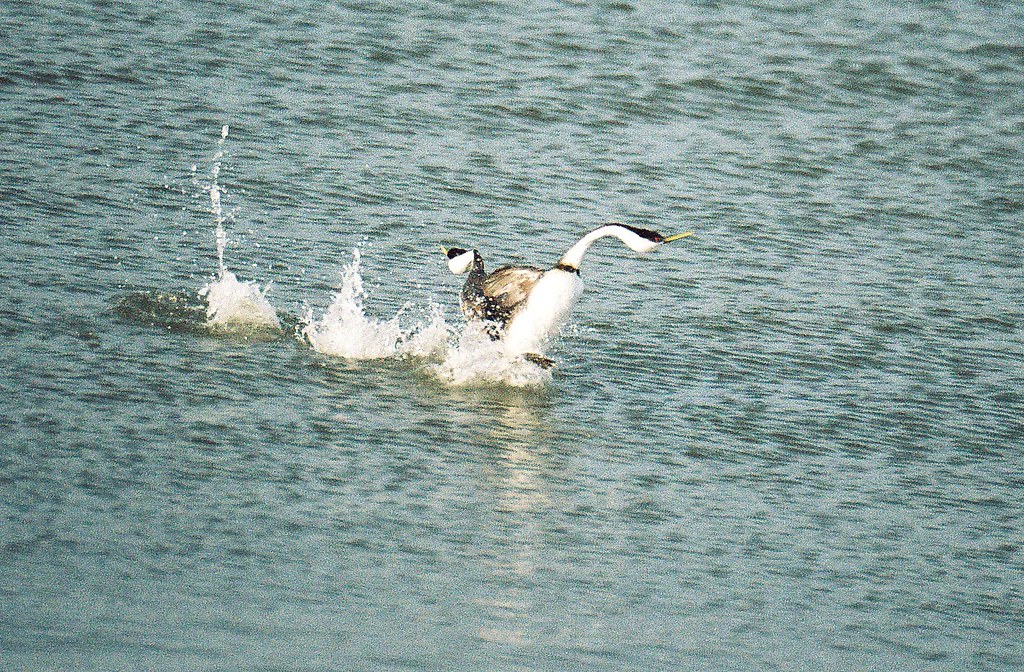
The Western Grebe (Aechmophorus occidentalis) performs one of nature’s most spectacular courtship displays, often referred to as “rushing” or “racing.” During this remarkable ritual, a pair of grebes simultaneously rear up and sprint across the water’s surface for up to 20 meters, maintaining a perfectly upright posture with their necks curved elegantly. Their feet paddle the water at an astonishing rate of 15-20 steps per second, creating enough force to temporarily support their body weight against gravity. This high-speed display not only serves to strengthen pair bonds but also demonstrates the physical fitness of potential mates. The Western Grebe’s rushing behavior occurs primarily during breeding season on lakes throughout western North America, where these dramatic water dances can often be observed at dawn or dusk.
Clark’s Grebe: The Precision Water Runner
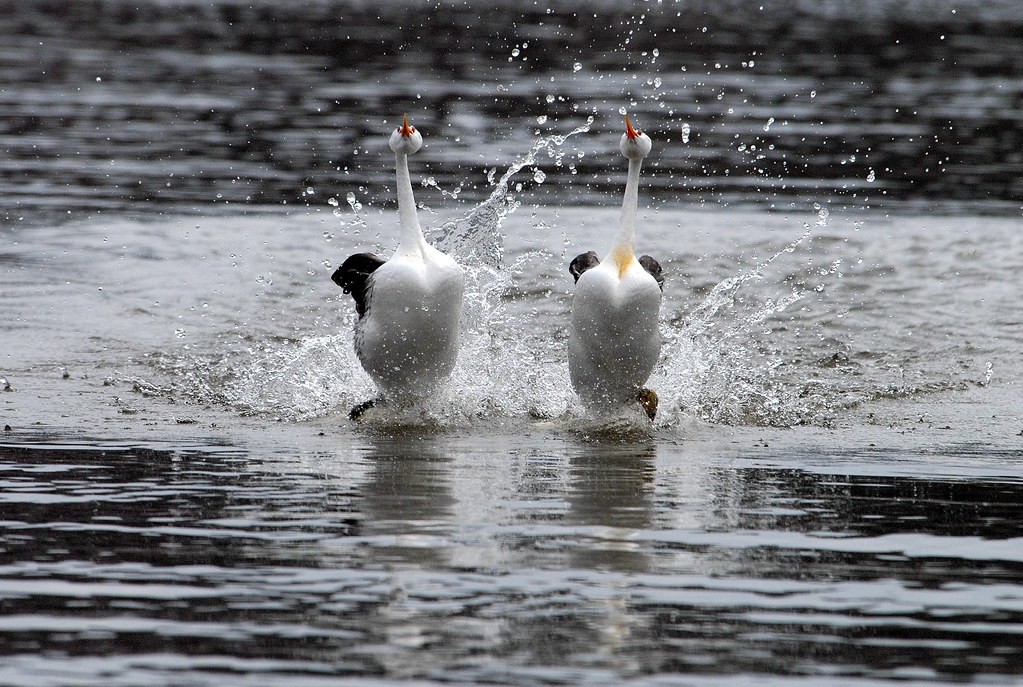
Closely related to the Western Grebe, Clark’s Grebe (Aechmophorus clarkii) performs an equally impressive water-running display with remarkable precision. Until 1985, scientists classified them as the same species, but subtle differences in facial patterns and bill color helped identify them as distinct species. During their synchronized rushing ceremony, a Clark’s Grebe pair maintains perfect alignment, matching each other’s movements with extraordinary coordination as they sprint across the water’s surface. Their specially adapted legs—positioned far back on their bodies—generate tremendous propulsive force when combined with their streamlined shape. Research has shown that these birds can maintain water-running speeds exceeding 7 meters per second, generating enough hydrodynamic lift to support 20-30% of their body weight during these spectacular displays.
The Jacana’s Giant Toes
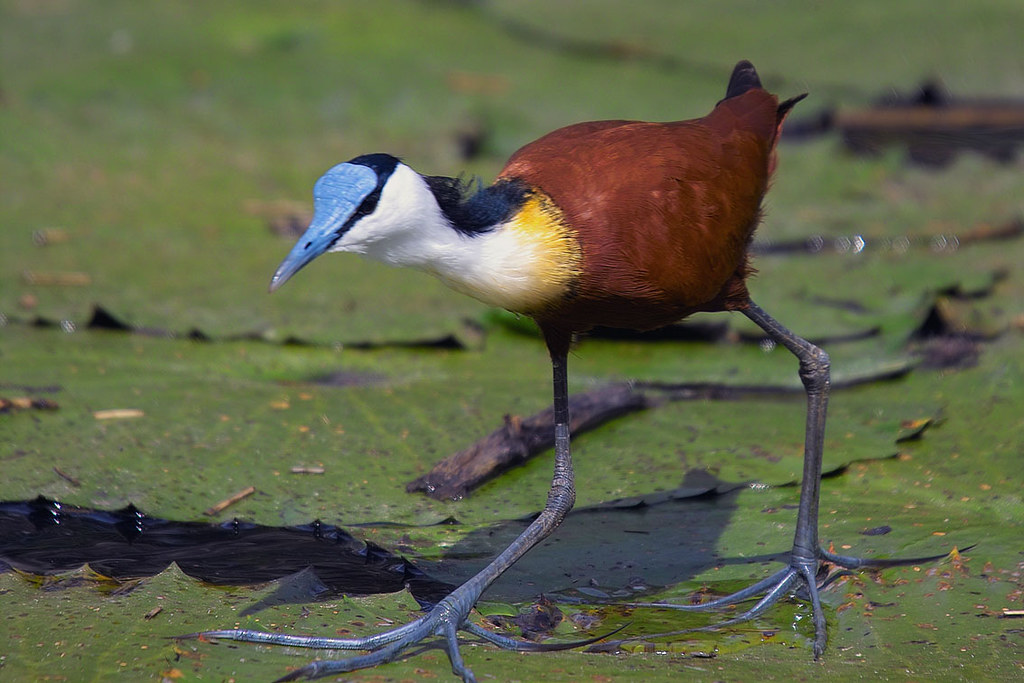
The jacana family (Jacanidae) represents nature’s perfect adaptation for walking atop floating vegetation, creating the illusion of walking on water. These tropical wading birds possess disproportionately long toes that evenly distribute their weight across lily pads and other aquatic plants. The Northern Jacana’s feet can span up to 8 inches (20 cm) across, despite the bird itself weighing only about 3-5 ounces (85-140 grams). This remarkable adaptation allows them to delicately step across floating vegetation without sinking, as they forage for insects and small aquatic prey. Jacanas inhabit tropical wetlands across several continents, where they’ve earned nicknames like “lily-trotters” and “lotus-birds” for their seemingly miraculous ability to traverse watery surfaces.
Stormy Petrels: Dancing on Ocean Waves
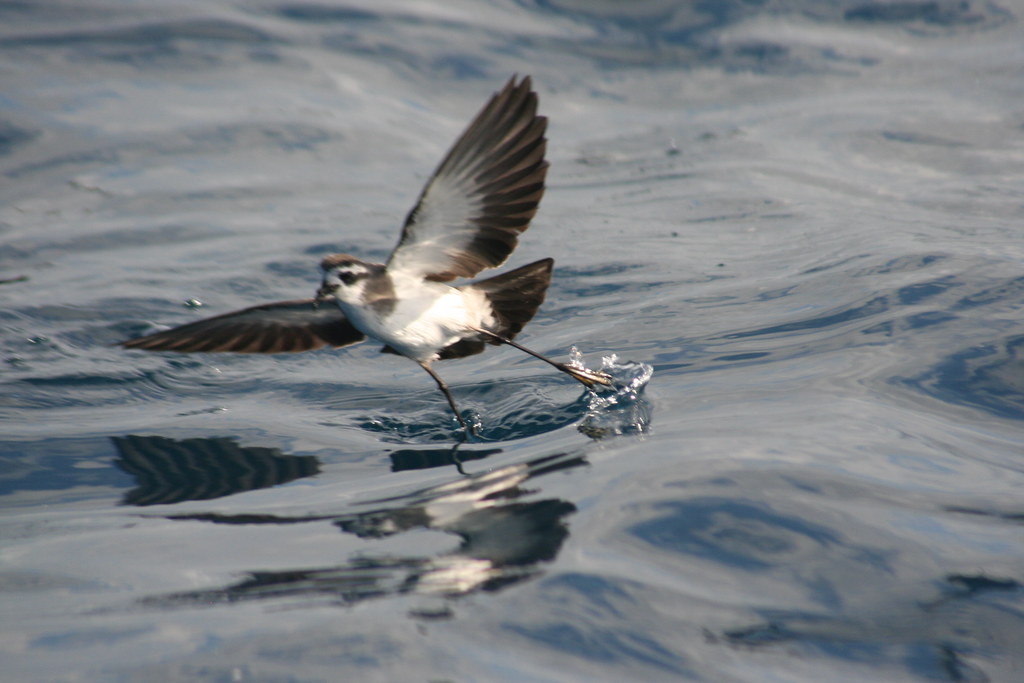
Storm petrels, particularly the Wilson’s Storm Petrel (Oceanites oceanicus), create the fascinating illusion of walking on water as they feed across the open ocean. These small seabirds hover just above the water’s surface with their legs dangling down, periodically pattering their feet against the water in a behavior known as “foot-pattering” or “dancing.” This technique serves multiple purposes: it helps maintain their position against wind currents, stirs up small marine creatures hiding just below the surface, and allows them to sense prey through subtle vibrations. Storm petrels can sustain this water-dancing behavior for extended periods while picking tiny crustaceans, fish eggs, and other marine morsels from the waves. Despite weighing less than an ounce (20-38 grams), these remarkable ocean wanderers travel thousands of miles during migration, spending most of their lives far from land.
The Water Ouzel: Underwater Walker
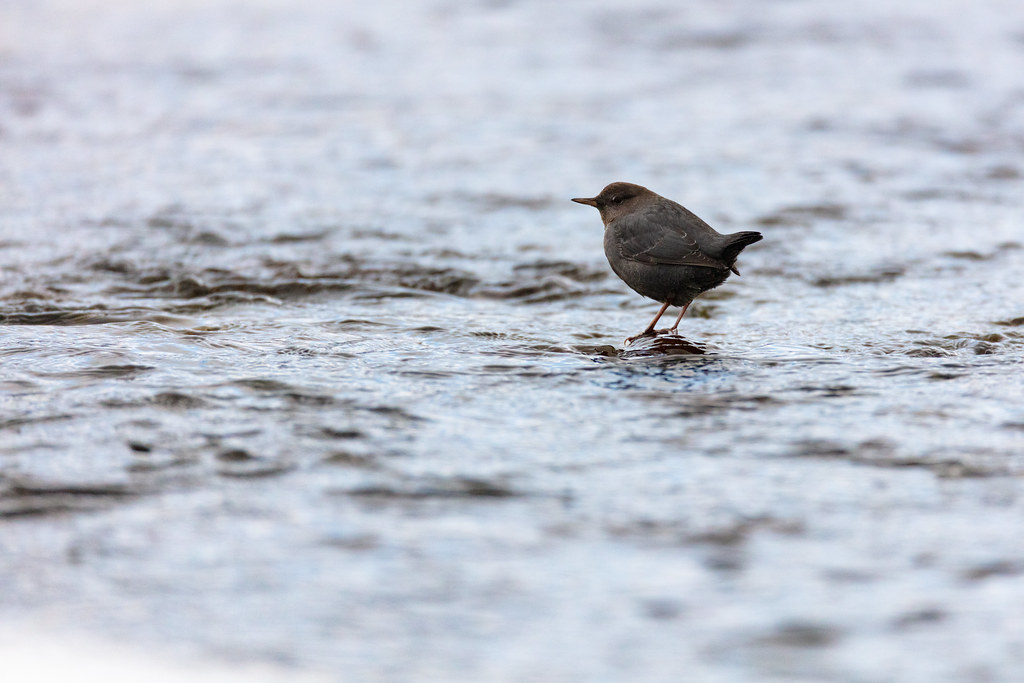
The American Dipper (Cinclus mexicanus), also known as the water ouzel, displays perhaps the most unusual water-walking adaptation among songbirds. Unlike the other birds on this list, dippers don’t just walk on water—they actually walk underwater! These remarkable birds can submerge themselves completely in fast-flowing mountain streams and literally walk along the stream bottom, gripping rocks with their strong feet while searching for aquatic insects. Special adaptations including dense plumage, large preen glands that secrete waterproofing oils, and specialized blood cells that store extra oxygen enable them to stay submerged for up to 30 seconds. Their unusual behavior inspired naturalist John Muir to write eloquently about them, calling the dipper “the mountain stream’s own darling, the humming-bird of blooming waters.”
The Science Behind Water Walking
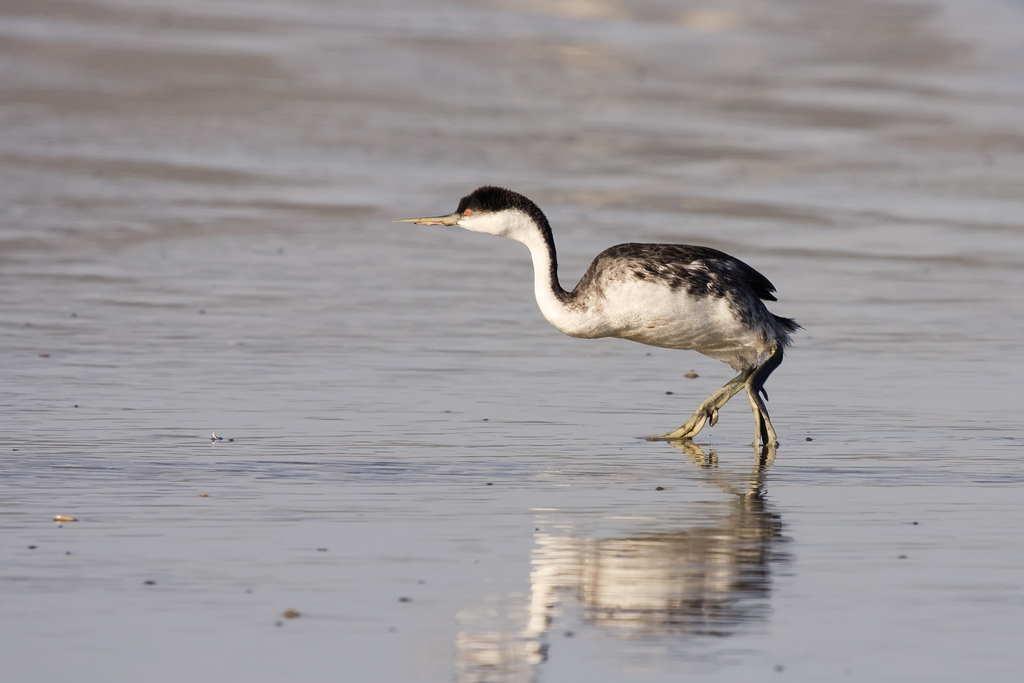
The physics behind birds’ water-walking abilities involves a complex interplay of forces including surface tension, momentum, and hydrodynamic lift. For rapid water runners like grebes, their feet act like hydroplanes, creating pressure waves that temporarily support their weight if moved quickly enough. Scientists at MIT have studied this phenomenon extensively, determining that grebes’ feet must move at a minimum speed of 1.5 meters per second to generate sufficient force for water running. Jacanas utilize a different principle, distributing their weight across a large surface area to avoid breaking through floating vegetation. Their specialized foot structure takes advantage of surface tension and buoyancy of aquatic plants. Understanding these mechanisms has inspired biomimetic research into water-walking robots and specialized footwear for emergency water rescue situations.
Evolutionary Advantages of Water-Walking
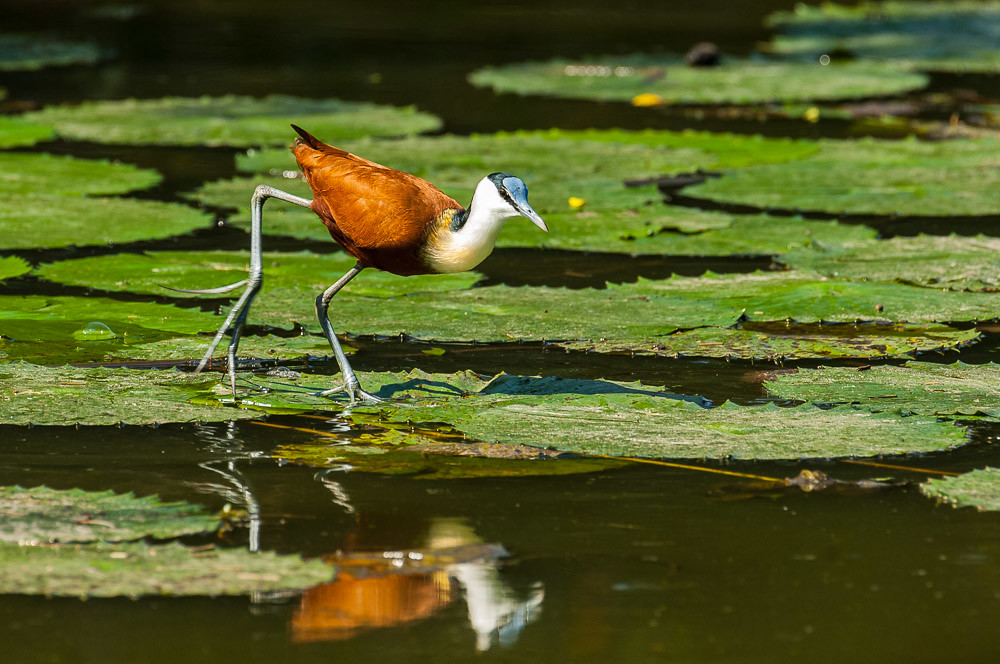
Water-walking adaptations provide numerous evolutionary advantages that have helped these bird species thrive in their respective environments. For grebes, their spectacular rushing displays serve as honest signals of physical fitness, helping females select genetically superior mates with the strength and coordination needed for successful reproduction. Jacanas’ ability to traverse floating vegetation gives them exclusive access to food resources unavailable to other birds, reducing competition and creating a specialized ecological niche. Storm petrels’ foot-pattering technique allows them to feed efficiently without expending the energy required for continuous flight, an important adaptation for birds that spend months at sea without returning to land. These specialized behaviors represent millions of years of evolutionary refinement, demonstrating nature’s remarkable ability to develop solutions for life at the water-air interface.
Western and Clark’s Grebes: Distinguishing the Water Dancers
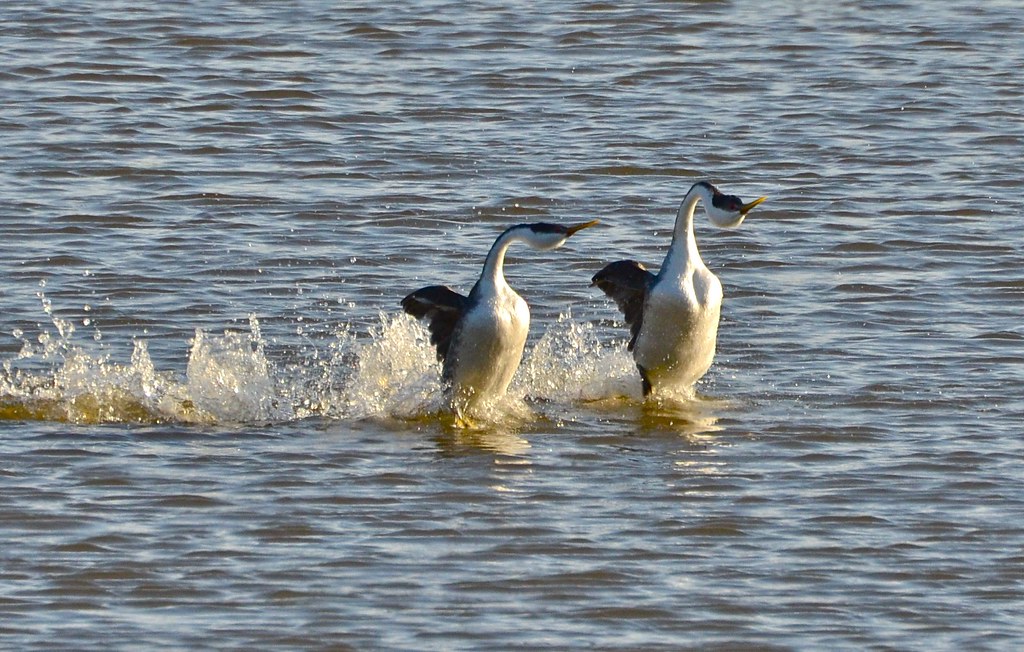
While Western and Clark’s Grebes perform nearly identical water-dancing displays, telling these close relatives apart requires careful observation of subtle physical differences. Western Grebes feature black feathers that extend below the eye and a greenish-yellow bill, while Clark’s Grebes have white feathers surrounding the eye and a bright orange-yellow bill. Their rushing displays became a subject of scientific interest in the 1980s when researchers first documented the extraordinary speeds and physical forces involved. High-speed photography revealed that during water-rushing, these birds can take up to 22 steps per second—so rapid that the human eye perceives only a blur. Both species face similar conservation challenges as drought and habitat loss affect their breeding grounds across western North America, making their spectacular water dances increasingly rare sights.
Jacanas: Reversed Parental Roles
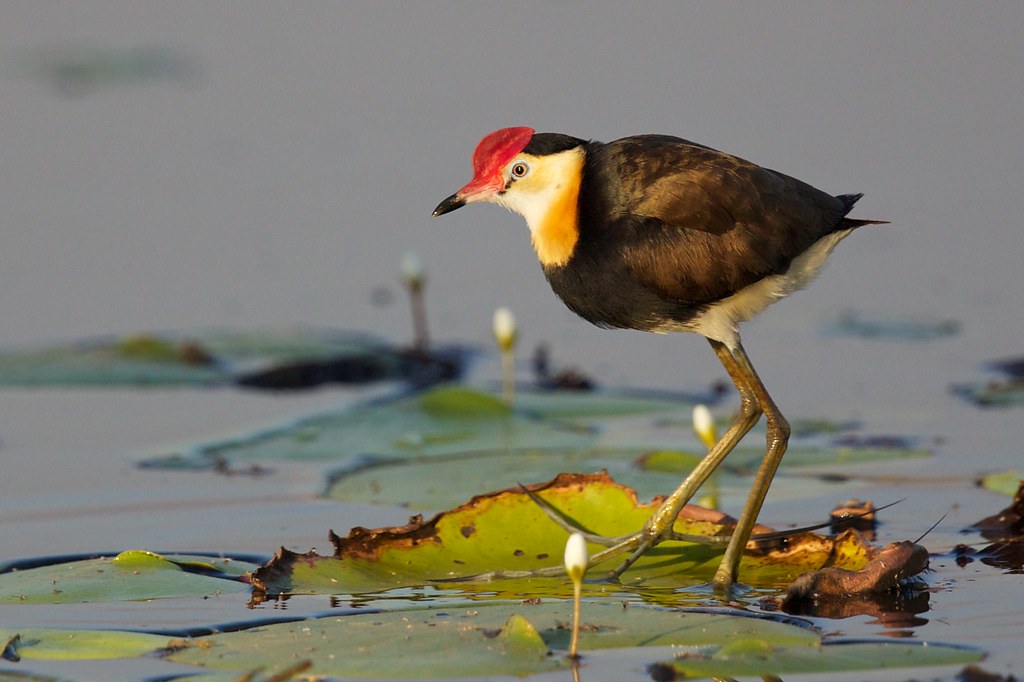
Jacanas’ remarkable water-walking abilities are matched by their equally unusual reproductive strategy known as polyandry, where females mate with multiple males who then take complete responsibility for egg incubation and chick-rearing. Female jacanas are significantly larger and more aggressive than males, defending territories that may contain harems of up to four smaller male partners. This role reversal appears linked to their specialized environment, as females’ larger size may provide advantages in defending prime feeding territories across floating vegetation. Male jacanas have evolved specialized techniques for carrying chicks under their wings while water-walking across lily pads when danger threatens. Their ability to navigate across unstable floating surfaces proves essential during these rescues, as males must quickly gather chicks and transport them to safety without sinking into the water.
Storm Petrels: The Ocean Nomads
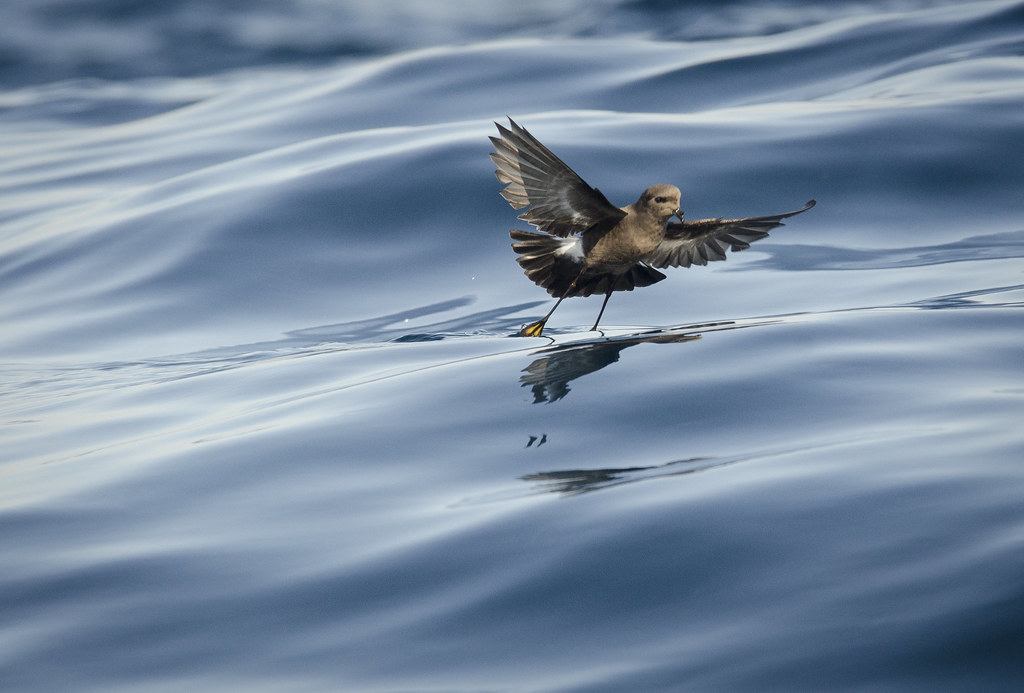
Storm petrels’ water-dancing behavior represents just one fascinating aspect of these remarkable seabirds that spend nearly their entire lives on the open ocean. Most species come ashore only to breed, nesting in burrows on remote islands where they return under cover of darkness to avoid predators. Their water-walking technique helps them feed efficiently during their nomadic ocean existence, allowing them to harvest tiny marine organisms while expending minimal energy. Wilson’s Storm Petrels hold the distinction of being among the most abundant bird species on Earth, with an estimated population exceeding 50 million individuals. Despite their abundance, their pelagic lifestyle makes them relatively unknown to most people, as they typically remain far offshore where their delicate dance across the waves goes largely unwitnessed by human observers.
American Dippers: Songbirds Defying Convention
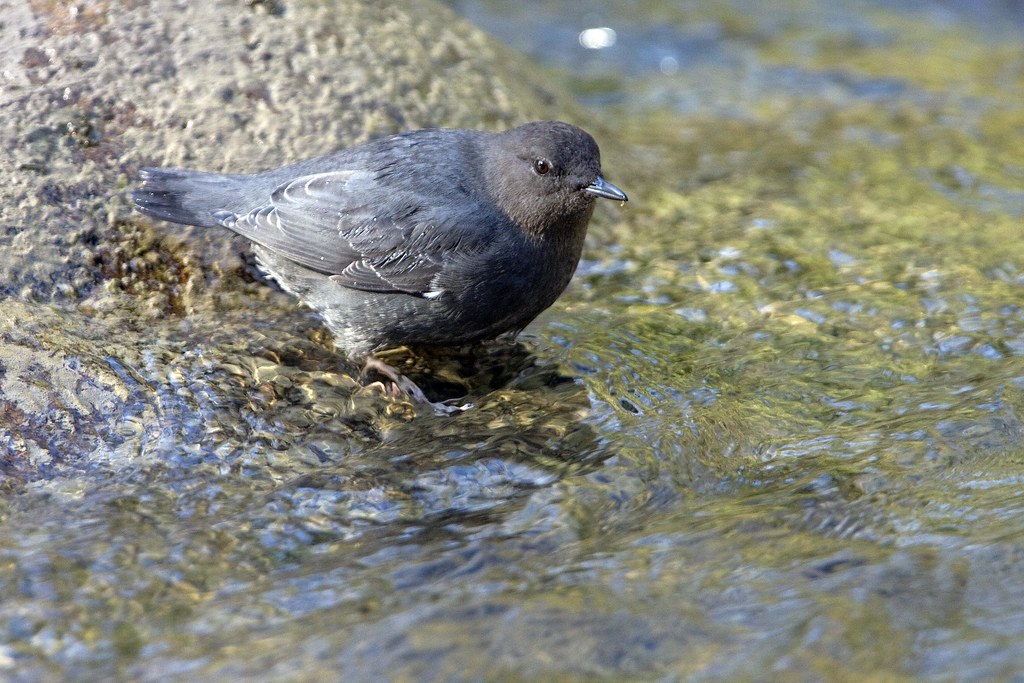
American Dippers stand out as North America’s only truly aquatic songbird, defying conventional boundaries between land and water birds. Their underwater walking technique requires remarkable physiological adaptations, including a slowed heart rate during submersion and specialized nasal flaps that prevent water from entering their nostrils. These chunky, gray birds make their homes alongside fast-flowing mountain streams, where they build dome-shaped nests often positioned behind waterfalls or on rocky ledges. Their underwater foraging behavior allows them to access food resources unavailable to other songbirds, including caddisfly larvae, small fish, and aquatic insects. Dippers communicate using a series of melodious warbles and trills that can remarkably be heard even above the sound of rushing water, adding another dimension to their extraordinary adaptations for life between two worlds.
Conservation Challenges for Water-Walking Birds
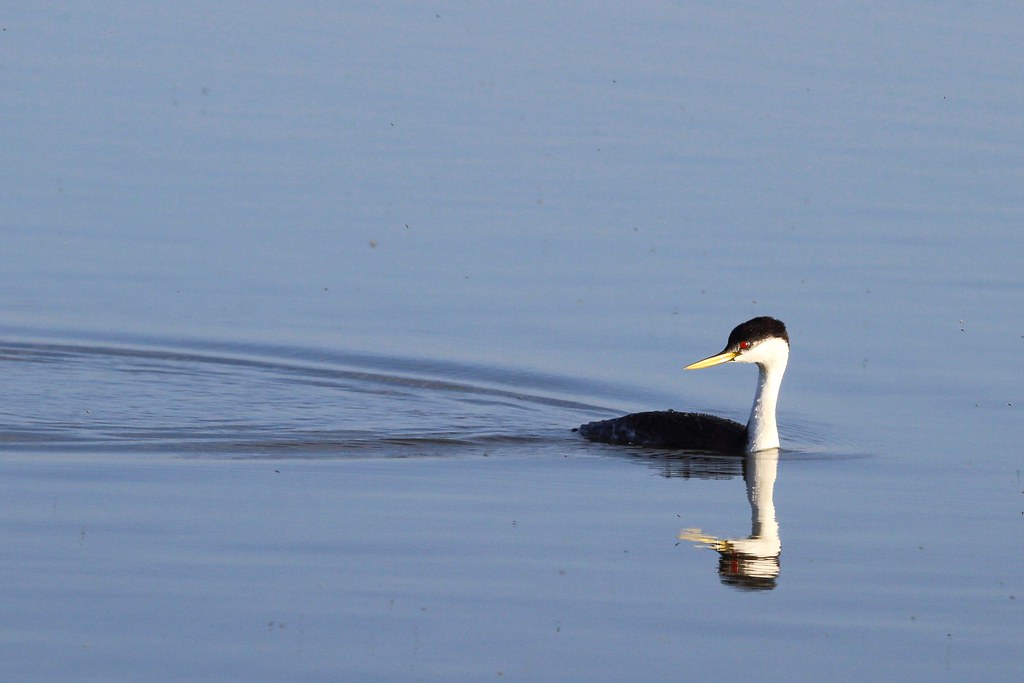
Birds that have mastered water-walking techniques face numerous conservation challenges in the modern world. Grebes depend on stable water levels in breeding lakes, making them particularly vulnerable to drought and water diversion projects that can leave nesting colonies stranded. Jacanas require healthy wetland ecosystems with abundant floating vegetation, habitats increasingly threatened by agricultural runoff, invasive species, and wetland drainage. Storm petrels face threats from ocean plastic pollution, as they frequently mistake plastic particles for food, and light pollution that disorients them during nighttime navigation. American Dippers depend on pristine mountain streams, making them sensitive indicators of water quality whose populations decline when waterways become polluted or altered. Conservation efforts for these specialized birds require protecting not just the birds themselves but the complex water ecosystems upon which their remarkable adaptations depend.
Conclusion
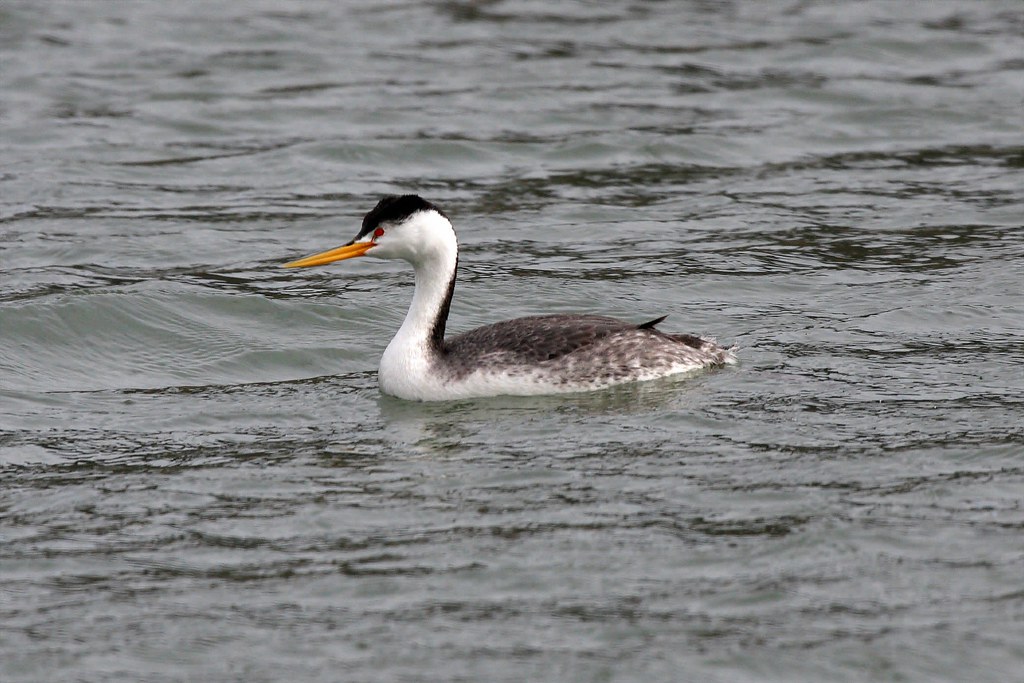
The five bird species we’ve explored demonstrate nature’s remarkable ability to adapt to challenging environments through specialized physical traits and behaviors. From the spectacular racing displays of Western and Clark’s Grebes to the delicate foot-pattering of storm petrels, these water-walking adaptations showcase evolutionary solutions that allow birds to exploit unique ecological niches. While they don’t literally defy physics, their specialized techniques create the magical illusion of walking on water—a reminder of the extraordinary diversity of strategies birds have developed to thrive at the interface between air and water. As we continue studying these remarkable adaptations, they not only enhance our understanding of avian evolution but also inspire biomimetic technologies that may one day allow humans to more effectively navigate aquatic environments. These water-walking birds remind us that sometimes nature’s reality can be even more impressive than the myths we create about defying its fundamental laws.
